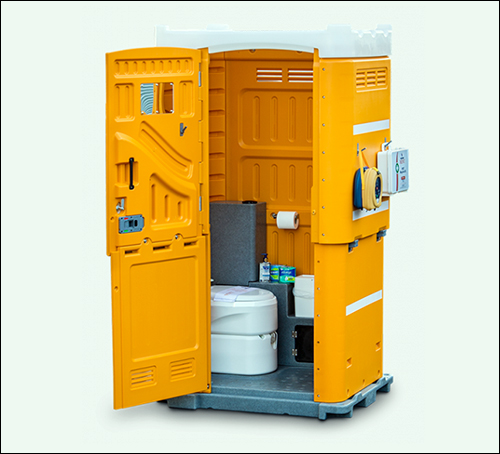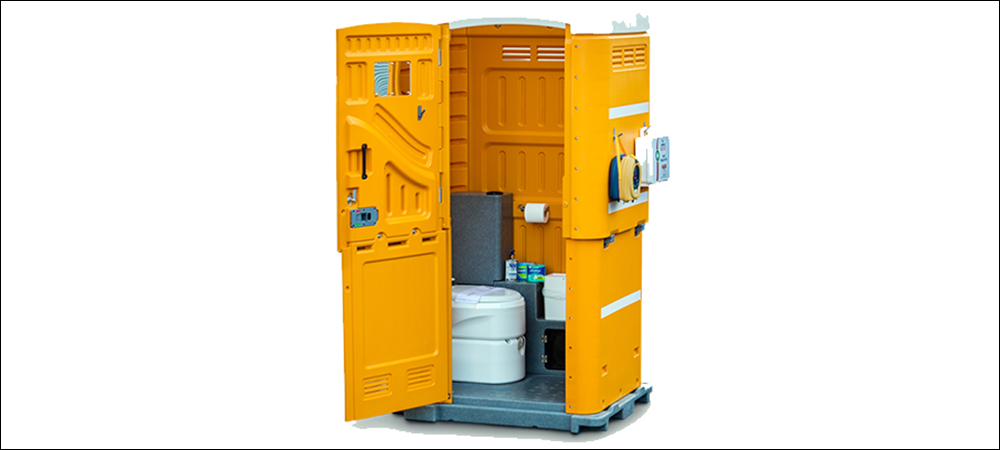Internet of Things (IoT) technologies have been foraying into such challenging applications as the real-time tracking of goods and assets at remote locations, even if they lack a power source. Traditionally, hard-to-track assets have included portable toilets that are often deployed in remote locations where the only way to confirm their status is to send workers to each site. U.K.-based technology company Foresolutions is providing battery-powered IoT devices from IoT hardware company Digital Matter and its own software for managing non-powered items, such as mobile toilets or equipment used to load and maintain aircraft at airports.
High Motive is providing the Foresolutions system with its mobile expandable wellbeing units (MEWU), complete with toilets and washrooms, that are deployed on the sides of railroads for use by maintenance crews. With battery-powered sensors and wireless connectivity, the solution helps railroads understand where the units are located, whether or not they are being used and when they may require maintenance. Altogether, Foresolutions has deployed its solution with several thousand IoT devices for a variety of non-motorized assets, including tools used at Heathrow Airport. In all cases, sensor data is collected regarding Foresolutions’ cloud-based software, which provides a dashboard and customizable alerts for the owners of those assets.

A mobile expandable wellbeing unit
Foresolutions, a communications and technology company, traditionally provided vehicle-based asset tracking, using GPS location data culled from the vehicles. More recently, however, the company has expanded its solutions to provide IoT data for lower-value, non-powered equipment, such as tools used at construction sites. Its customers include large construction companies and those supporting them, such as subcontractors and utility companies. The firm also provides IoT solutions for campus-based businesses, according to Tom Ross, Foresolutions’ managing director—for example, farms, hospitals, amusement parks and shopping centers.
Throughout the past year, Foresolutions has been partnering with Digital Matter, which makes battery-powered sensors that leverage wireless networks, including LTE, GSM, Wi-Fi and Bluetooth Low Energy (BLE), to forward data to the cloud, no matter where a sensor may be deployed. Digital Matter’s products include the Oyster, Guppy, Falcon and G120.
Foresolutions is providing Digital Matter’s Oyster 2 sensor devices, powered by three AA batteries, on the mobile toilets, which can update railroad companies with the information they need to manage the units. These moveable toilets are being deployed across the United Kingdom for use by rail personnel, but they could be challenging to track. Those managing the stations often need to move them, and thus need to identify where they are located and which ones may be closest to a site where they will be needed next. They also need to know if the units require maintenance, information that would be based on how often they have been used.
Traditionally, this type of data cannot be accessed without a manual visit to the station. With the Oyster sensors, Ross says, Foresolutions’ system can detect not only GPS location but also such conditions as tilts, the opening and closing of doors, vibration, and temperature and humidity changes. The Digital Matter sensors, he adds, are optimized for this kind of application due to their relatively long battery life, flexible connectivity options and IP67 rating, which enables them to sustain temperature changes, water, ice and other outdoor conditions. Each sensor comes with a unique identifier, and that ID number is linked to the unit in Foresolution’s cloud-based software.
When the unit is installed at a specific location, the GPS data is updated in the software. Any changes in location or sensor readings, such as tilts that might indicate it is being moved, are forwarded to the software. In that way, those responsible for the stations can view where they are, as well as when they might be moving or may need to be serviced. “All that data feeds into one dashboard,” Ross says, and is customizable. “We want to deliver the data the customer needs.” Users can choose to create the exceptions that should trigger an alert.
The connectivity is flexible, Ross says, so one site could employ Sigfox or LoRaWAN, while another could leverage a Bluetooth gateway and capture transmissions at a shorter range. With the solution, users are expected to be more efficient in their management of equipment, and less likely to lose a station. The technology could make operations more sustainable, he adds, since they won’t need to physically send crews to sites where the stations do not require servicing. And for the stations’ users—work crews, for instance—the IoT data helps to ensure that the units are sanitized and well-maintained.
The sensors’ long battery life enables companies to offer solutions for tracking goods in remote locations, says Kevin Everett, Digital Matter’s CEO, which opens up new revenue options for companies like Foresolutions. The hardware business, founded in 2000, produces devices for GPS tracking and the IoT. It operates out of four locations, with a head office in Australia, and offers go-to-market strategies for helping telematic businesses scale and diversify for asset tracking. In addition, the firm helps systems integrators, original equipment manufacturers and network operators accelerate their IoT network adoption.
According to Everett, the range of products offered, as well as their performance and flexibility, sets the company apart. “What we find in IoT solutions is that ‘one size fits all’ just doesn’t work,” he states, so the company can work directly with customers or partners to build the solution required for a given use case. The latest sweet spot, Everett says, involves battery-powered IoT devices. “Our new range of products have good performance with a long battery life.” The latest product is the Yabby Edge device, which provides a 12-year battery life and indoor/outdoor use, along with Wi-Fi and satellite functionality, at half the price of competing products, the company claims.
Most of Digital Matter’s devices are connectivity-agnostic, Everett reports. They can be cellular-based with LTE and NB-IoT, or they can employ LoRaWAN, Sigfox or BLE to transmit data to a gateway. In the latter scenario, Digital Matter’s Bluetooth tags can be applied to pallets or cartons loaded into containers or onto vehicles. They could then transmit information to a gateway, enabling companies to track the locations of goods within a shipment. “Not only [are they] getting an indication of where a trailer might be,” Everett says, “but an inventory list of what’s on the trailer.”
Foresolutions is providing its IoT solution to Heathrow Airport, where several thousand non-motorized assets—steps, tugs and other equipment—are being tracked in order to help management understand utilization and locate equipment as needed. The company also provides its solutions in such markets as agriculture, housing and manufacturing.


